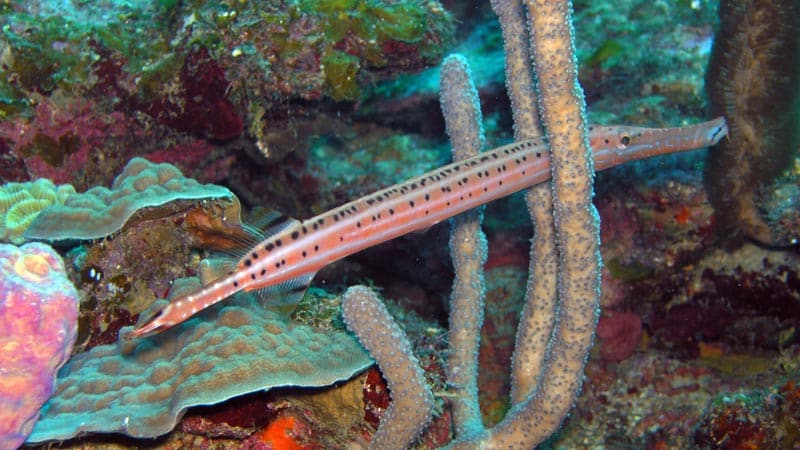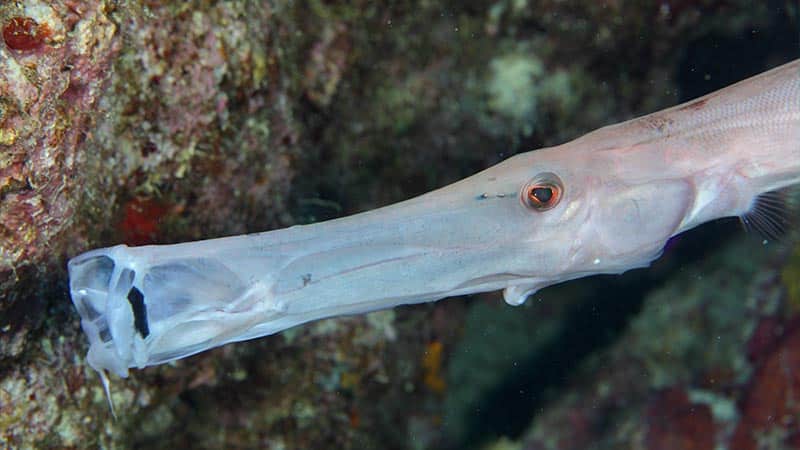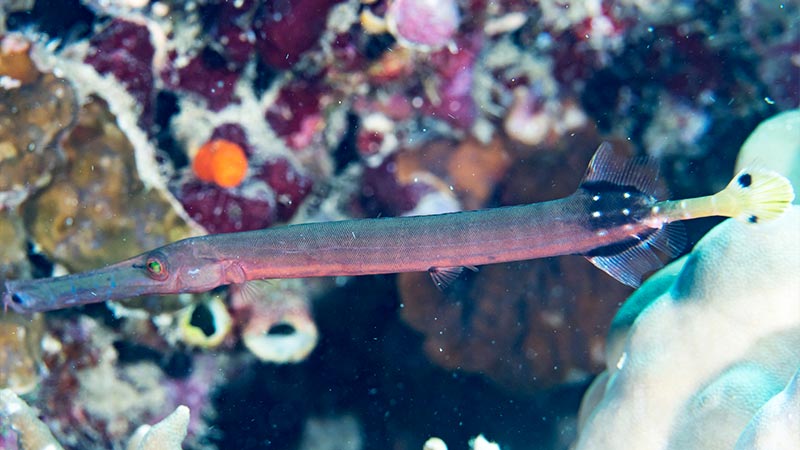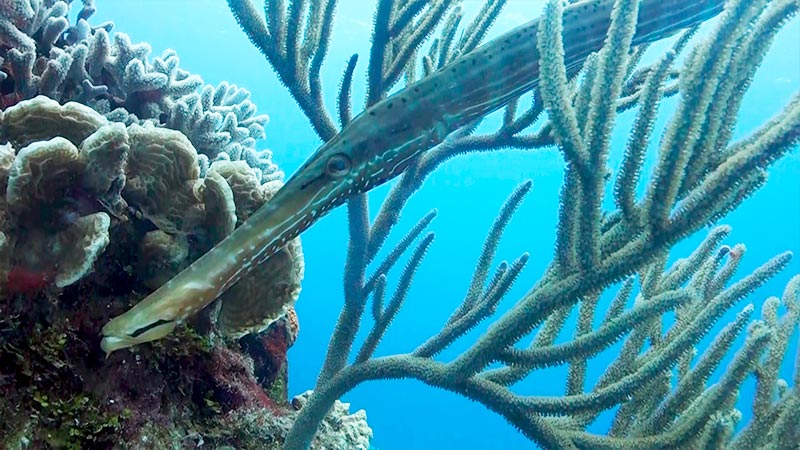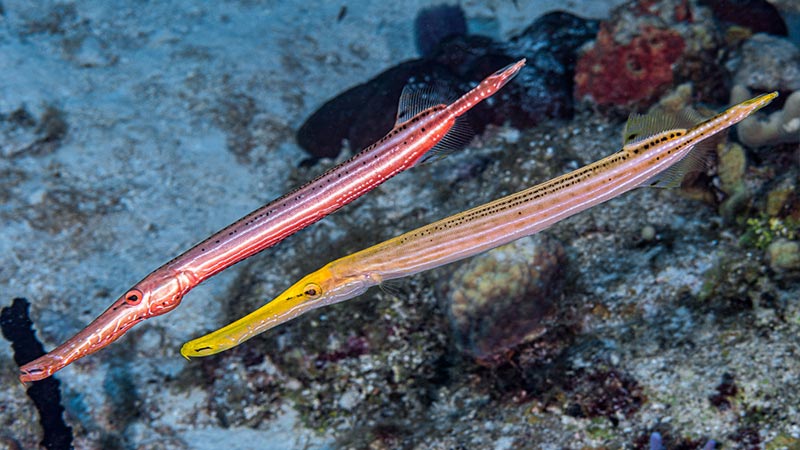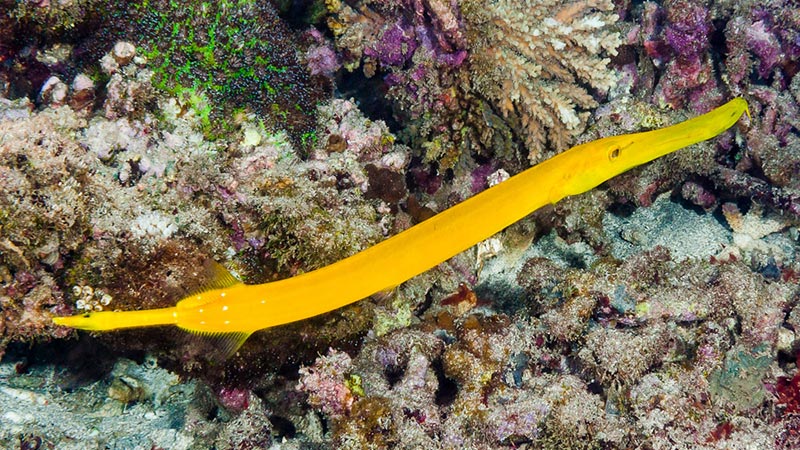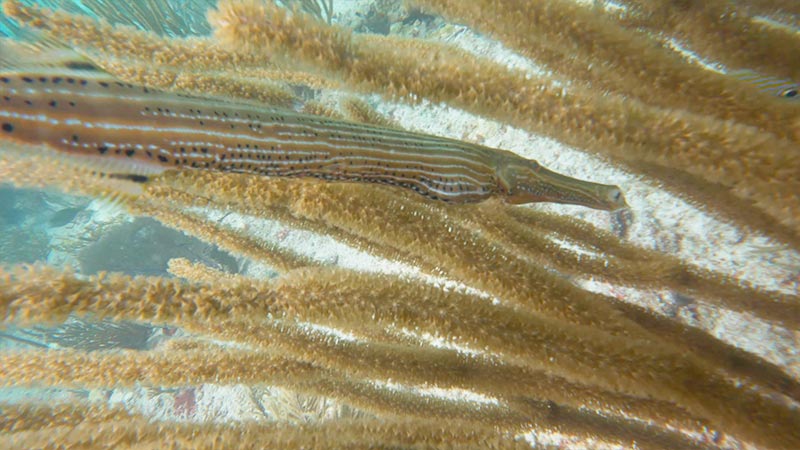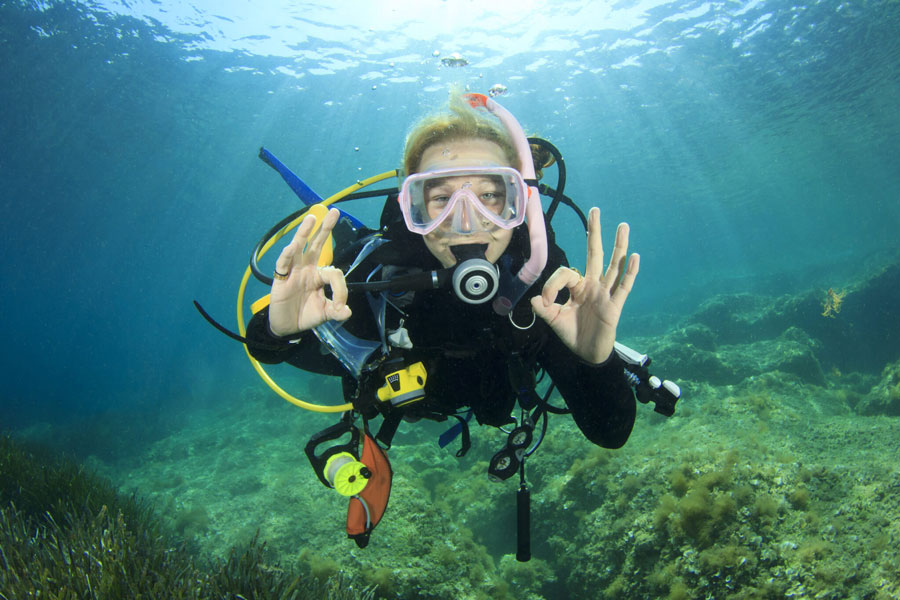2. Physical Appearance of Trumpetfish
As we have already mentioned, trumpet fish appear elongated, both in their bodies and in their heads, which is useful for them to access the crevices of the corals where they live. On the chin, they have a distinctive feature and lack teeth on the upper jaw, while they have tiny ones on the lower jaw.
Their dorsal fins consist of between eight and thirteen small, isolated spines, while the pelvic fins, situated behind the pectoral fins, are short and reach the anus. The dorsal and anal fins are relatively tall and similarly shaped towards the back of their bodies. The base of the tail is thin, and the tail fin has a rounded shape.
In addition, they have small, rough scales.
2.1. How Long Is a Trumpet Fish?
If you have only seen photographs of a trumpetfish and have not encountered one in its natural habitat, you will be surprised by their actual size, as they can grow up to one meter (3 feet) in length.
2.2. Trumpet Fish Color Variations
One of the most astonishing aspects of trumpet fish is their ability to change color. Typically, their color phase ranges from brown to red, but they can exhibit shades that range from grayish-blue to bright yellow. Additionally, their bodies usually display pale lines, small scattered black spots, and a black stripe on the upper jaw. It is important to note that the yellow trumpetfish and the blue trumpet fish are not two different species but rather the same species that change color.
How do trumpetfish change color, and why do they do it?
Trumpet fish change color thanks to the chromatophores in their skin. These are cells with pigments inside that reflect light. Trumpetfish swap one pigment for another, reorient the reflective surface, and voilà, they change from blue to yellow to green in the blink of an eye. This ability allows them to adapt to their environment and effectively camouflage themselves, as they require light to maximize their mimicry ability. Therefore, they are diurnal creatures and remain active during the day.
Due to their small fins, they do not stand out as swimmers, so this camouflage mechanism allows them to stalk their prey without being seen and protect themselves from predators. They have a dual role, as they can be both predators and prey (we will explore some camouflage techniques in the curiosities section).
Additionally, their changing color palette plays a significant role in their love life, as during courtship, trumpet fish put on a colorful display in a captivating underwater dance.




